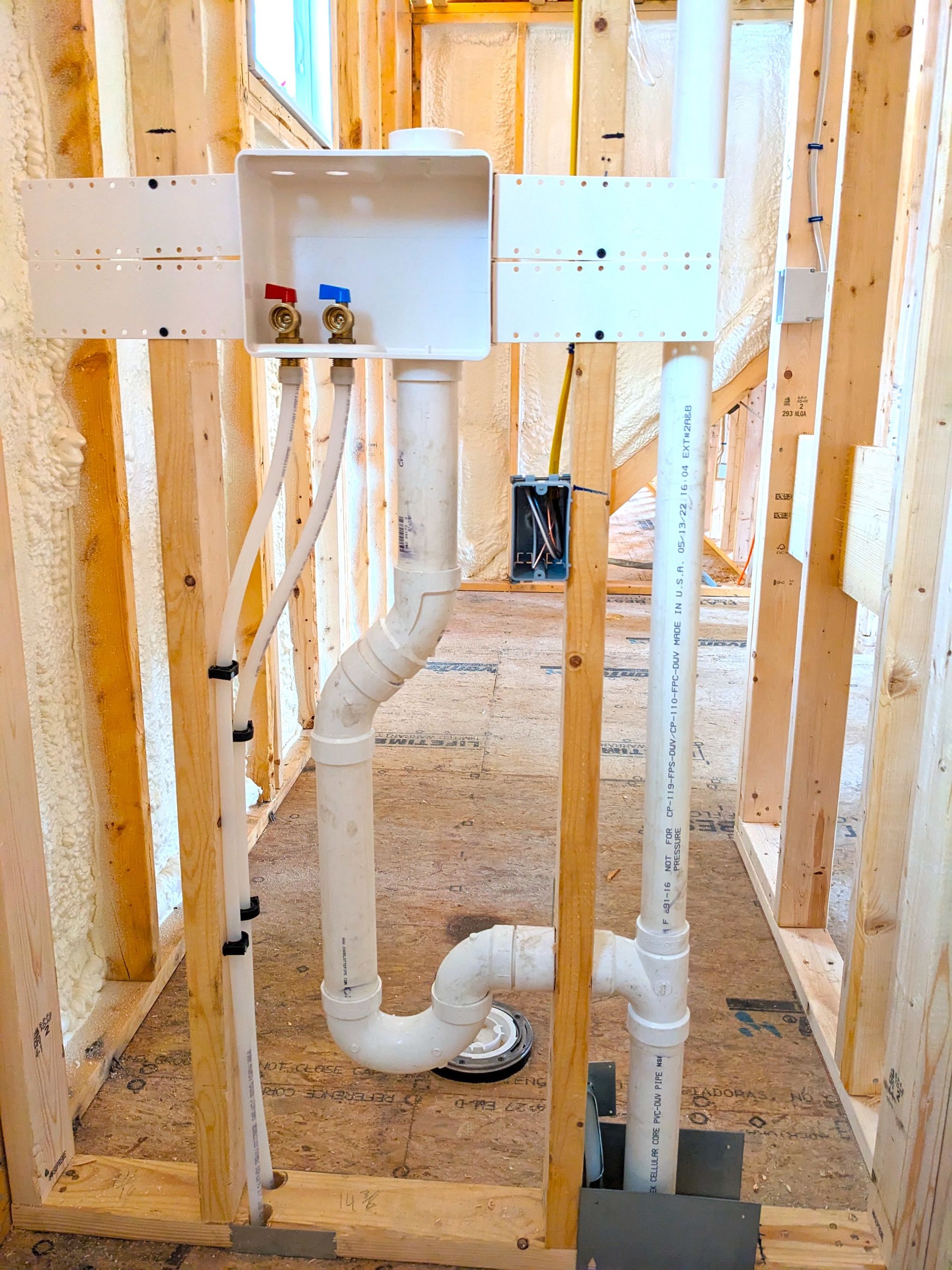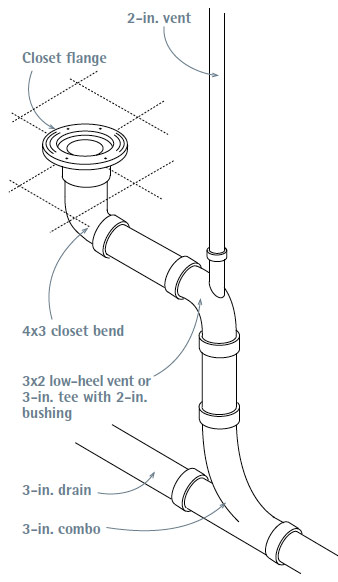The Benefits of Adequate Ventilation in Your Plumbing System
The Benefits of Adequate Ventilation in Your Plumbing System
Blog Article
We have uncovered this great article involving The Upsides of Proper Ventilation in Plumbing Design listed below on the internet and believe it made sense to talk about it with you on this site.

Appropriate ventilation in pipes systems is commonly ignored, yet it is crucial for preserving the functionality and safety and security of your home's plumbing. Ventilation assists manage air pressure, stop the build-up of hazardous gases, and guarantee the effective elimination of waste. In this overview, we will certainly discover the relevance of correct pipes air flow, just how it functions, and the advantages it gives your pipes system.
Comprehending Ventilation in Plumbing
Ventilation in pipes describes the network of pipelines that permit air to flow via the drainage system. These vents serve numerous objectives, including regulating atmospheric pressure within the pipelines, stopping sewage system gases from entering the home, and helping in the smooth flow of wastewater.
How Ventilation Functions in Plumbing Equipments
Atmospheric Pressure Guideline
Appropriate ventilation maintains well balanced atmospheric pressure within the pipes system. When water streams through pipelines, it displaces air. Without ample air flow, this displacement can develop unfavorable stress, resulting in reduce drains or siphoning of water from traps, which can trigger undesirable smells to seep into the home.
Protecting Against Sewer Gas Accumulation
One of the most critical features of plumbing vents is to avoid sewer gases, such as methane and hydrogen sulfide, from building up within the home. These gases can position significant health dangers and are very combustible. Vent pipes allow these gases to run away safely outside.
Helping in Waste Removal
Ventilation aids in the effective removal of wastewater by protecting against airlocks in the drainage system. When air can stream openly with the vents, it permits water and waste to flow smoothly through the pipes, minimizing the risk of blockages and back-ups.
Sorts Of Pipes Vents
Main Heap Vent
The main pile air vent, also known as the air vent stack, is the key vent in a plumbing system. It extends from the major drain line up through the roof covering, allowing gases to leave and fresh air to get in the system.
Branch Vent
Branch vents attach to the main pile air vent and serve specific components, such as sinks, toilets, and showers. These vents make certain that each fixture has ample ventilation to work correctly.
Air Admission Valve (AAV).
An Air Admission Valve (AAV) is a one-way valve that enables air to get in the plumbing system without the demand for a standard air vent pipe prolonging via the roof. AAVs are generally utilized in remodellings or areas where setting up a standard vent is impractical.
Indicators of Poor Ventilation in Plumbing.
Slow Draining Fixtures.
If your sinks, tubs, or commodes are draining slowly, maybe an indicator of inadequate air flow. Poor air flow can create a vacuum cleaner impact, making it tough for water to drain effectively.
Gurgling Seems.
Gurgling sounds coming from drains pipes are usually a result of air being drawn with water catches because of negative stress in the pipes. This is a clear indication of not enough ventilation.
Undesirable Odors.
Sewer odors inside your home are a red flag that your pipes system is not properly aerated. This might indicate that sewage system gases are not being adequately vented outside, resulting in potentially dangerous conditions.
Usual Ventilation Errors.
Inadequate Vent Sizing.
Utilizing small air vent pipelines can cause poor air flow and stress inequalities in the system. It's necessary to use vents that meet the details demands of your plumbing system.
Improper Vent Placement.
Positioning vents as well much from the components they offer can lower their performance. Correct placement makes sure that air can stream openly and successfully with the system.
Ignoring Code Requirements.
Building codes provide specific standards for pipes ventilation. Overlooking these codes can lead to a system that falls short to operate properly and may bring about expensive repair services or carcinogen.
Advantages of Appropriate Air Flow.
Boosted System Performance.
Effectively ventilated plumbing systems run a lot more efficiently, with fewer obstructions, faster draining, and much less stress on the pipelines. This performance expands the life-span of the pipes system.
Improved Air Top Quality.
By stopping drain gases from entering your home, appropriate ventilation adds to much better indoor air quality, making your living setting healthier and extra comfy.
Stopping Water Damage.
Ample air flow helps protect against water from being siphoned out of catches, which can lead to drain gases going into the home and causing water damages gradually.
Actions to Ensure Appropriate Ventilation.
Consulting Plumbing Codes.
Always seek advice from neighborhood pipes codes when developing or customizing your plumbing system. These codes give the needed guidelines for appropriate airing vent and ensure your system fulfills safety criteria.
Normal Inspection and Maintenance.
Regular examinations can help identify prospective ventilation problems before they become major issues. Upkeep jobs, such as cleaning up air vent pipes and looking for blockages, are important for keeping the system in good working order.
Professional Installation.
For brand-new installations or major alterations, it's a good idea to employ a professional plumbing technician. They have the expertise to make certain the ventilation system is appropriately made and installed according to code.
Verdict.
Correct ventilation is a crucial component of any kind of pipes system, guaranteeing that it works successfully and safely. By recognizing the importance of ventilation, identifying the signs of poor air flow, and taking actions to maintain your system, you can avoid expensive concerns and shield your home's air quality.
4 Things You Should Know About Your Plumbing Vents
What Plumbing Vents Are
Also called a vent stack, a plumbing vent is a vertical pipe attached to your drain line that runs through your roof. The plumbing vent pipe, or plumbing air vent, removes gas and odors from your plumbing system and allows fresh air to enter the pipes, helping the water to flow out of the drain pipes.
What Plumbing Vents Do
Plumbing vents have two basic functions. One of which is to allow unpleasant smelling wastewater and sewer gasses to escape your plumbing system instead of entering your home. Plumbing vent pipes are typically located on roofs, away from windows, to ensure the fumes exit the home completely.
The other function of the plumbing vent is to move fresh air into your plumbing system. This helps move water through every plumbing fixture in your house, like toilets and sink drains. Think of the way in which you need to let a little air into the bottle as you pour soda in order to make the drink flow smoothly.
Different Types of Plumbing Vents
True vent: This is the most common vent option. In simplest terms, a true vent is a vertical pipe attached to your drain line that exits through the roof. They often function as the main vent that other fixtures can connect to. Re-vent pipe or auxiliary vent: Attached to the drain line near specific plumbing fixtures, re-vent pipes run up and over to connect to the main vent. Common vent: Two plumbing fixtures installed on opposite sides of a wall are typically tied into the vent stack using something known as a sanitary cross. Wet vent: This venting option operates as a drain pipe and a vent at the same time. Wet vent drainage systems drain water from one fixture while venting the air from another. Although they’ve been used for over 100 years, wet vent systems have only recently been added to the plumbing code in many areas. If you’re planning on installing one in a bathroom remodel, make sure you check your local code prior to construction. Loop vent: For free-standing fixtures like kitchen island sinks, loop vents are ideal. These vent pipes run under the floor, rise from the P-trap, and create a loop inside the cabinet sink. Air admittance valve: An AAV is a one-way mechanical valve typically installed at the site of the plumbing fixture. AAVs allow venting to occur without having to tie into a larger venting system. They’re ideal for venting fixtures where you aren’t able to easily connect to an existing vent system. Common Plumbing Vent Issues
Although vent pipes typically don’t have water flowing through them, they’re still subject to many typical plumbing issues. For example, clogs are one of the most common problems associated with sewer vent pipes. If your vent pipe gets clogged, all of your plumbing fixtures tied into the vent stack will be affected.
A sink with a slow drain that bubbles and gurgles or a strong sewage smell around your toilet are both indicators that your toilet vent pipe is clogged. Because most vent pipes exit through the roof, old leaves, twigs or even a bird’s nest could be clogging the pipe.
Clogs in your vent pipe system cause a buildup of negative pressure, meaning that water won’t be able to flow out of your home very well. It’s similar to putting your finger over the opening of a straw to trap water inside. When you remove your finger, the water is able to flow out of the straw.
If you suspect you have any blockage in your vent, make sure you have a professional come examine the situation. Left unchecked, a blocked air vent can lead to other costly repairs, like leaks and sediment buildup.
Under Pressure
Pipe vents are essential aspects of a home’s plumbing system. Owning a home means learning about all sorts of things you never put much thought into before. But by understanding as much as you can about the important systems of your home, you can keep those budgets intact and those anxiety levels low.
https://www.homeserve.com/en-us/blog/home-improvement/plumbing-vents/

Do you enjoy reading up on The Upsides of Proper Ventilation in Plumbing Design? Place a review below. We'd be pleased to listen to your opinion about this content. We are looking forward to see you back again in the future. Sharing is caring. One never knows, you will be helping someone out. I love reading our article about What Is a Plumbing Vent and Why Is It Important.
Click Here Report this page